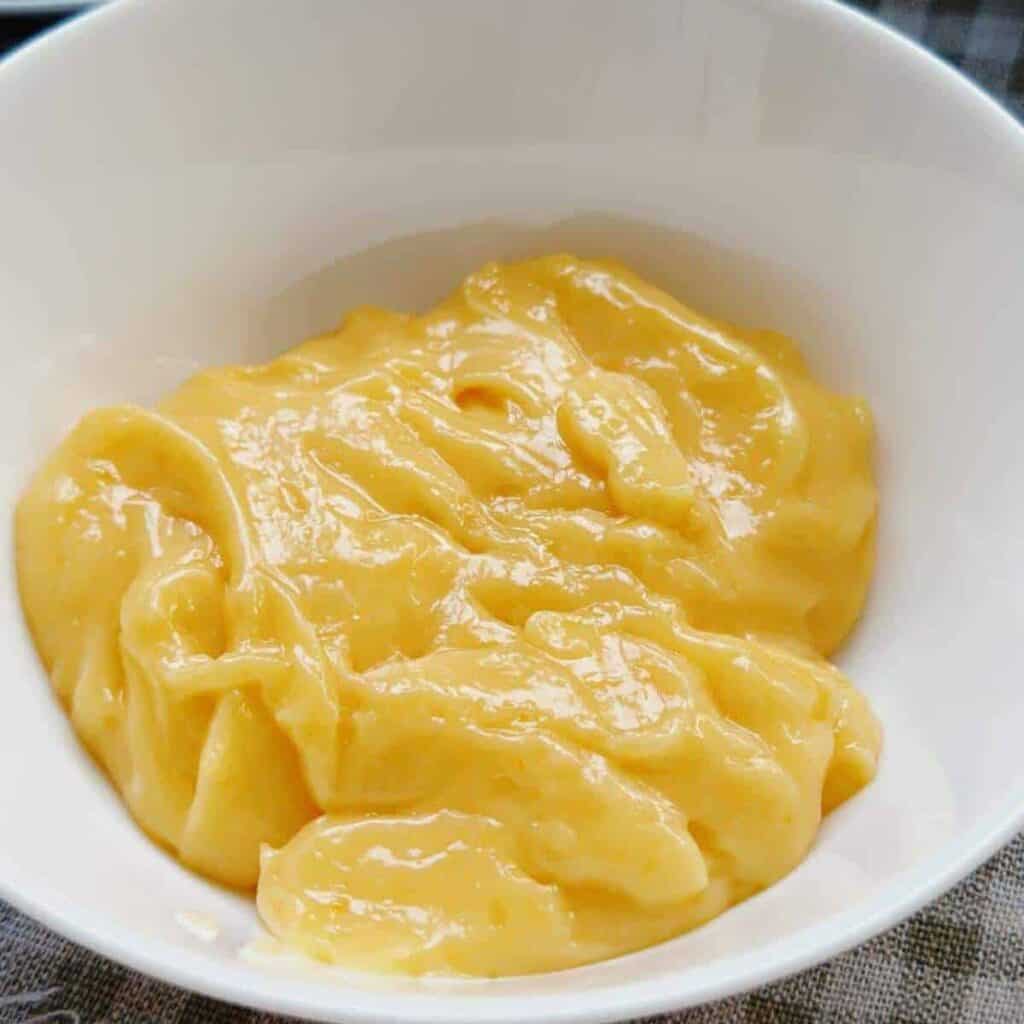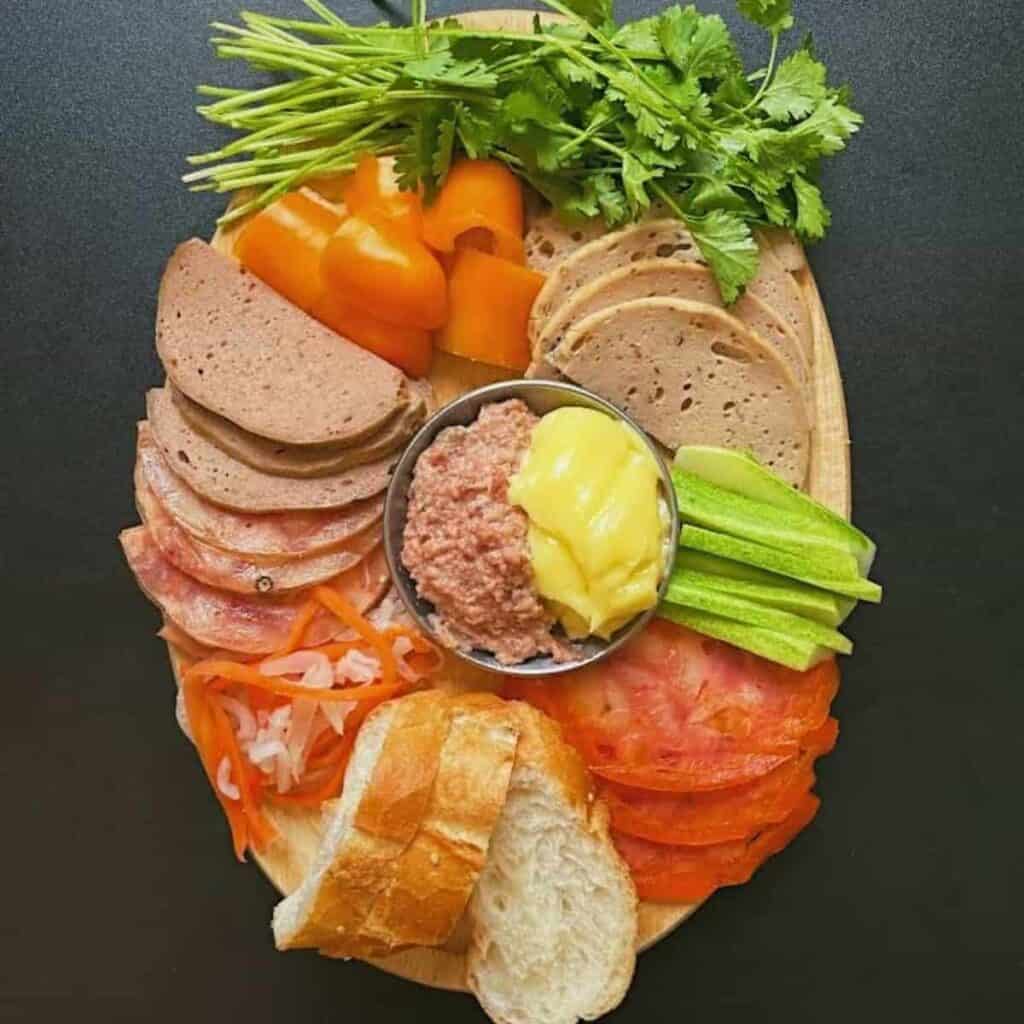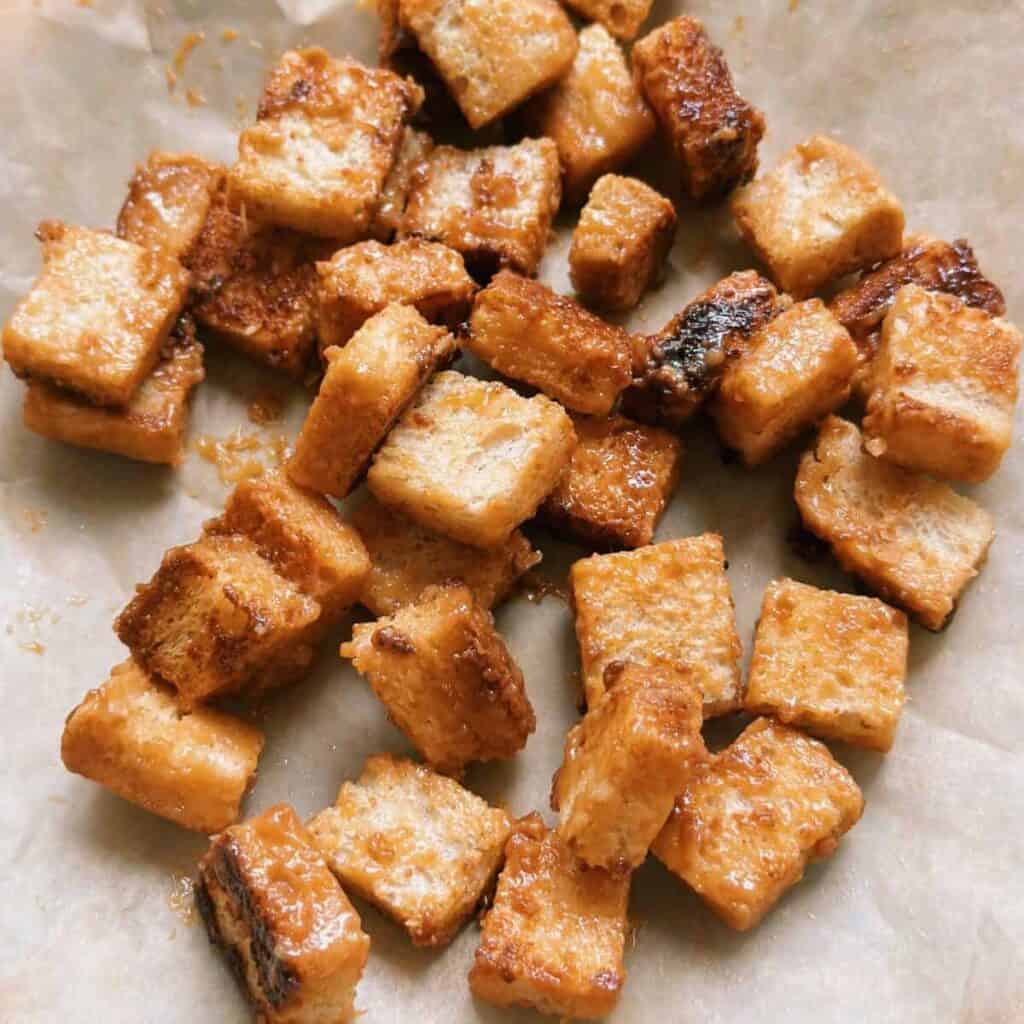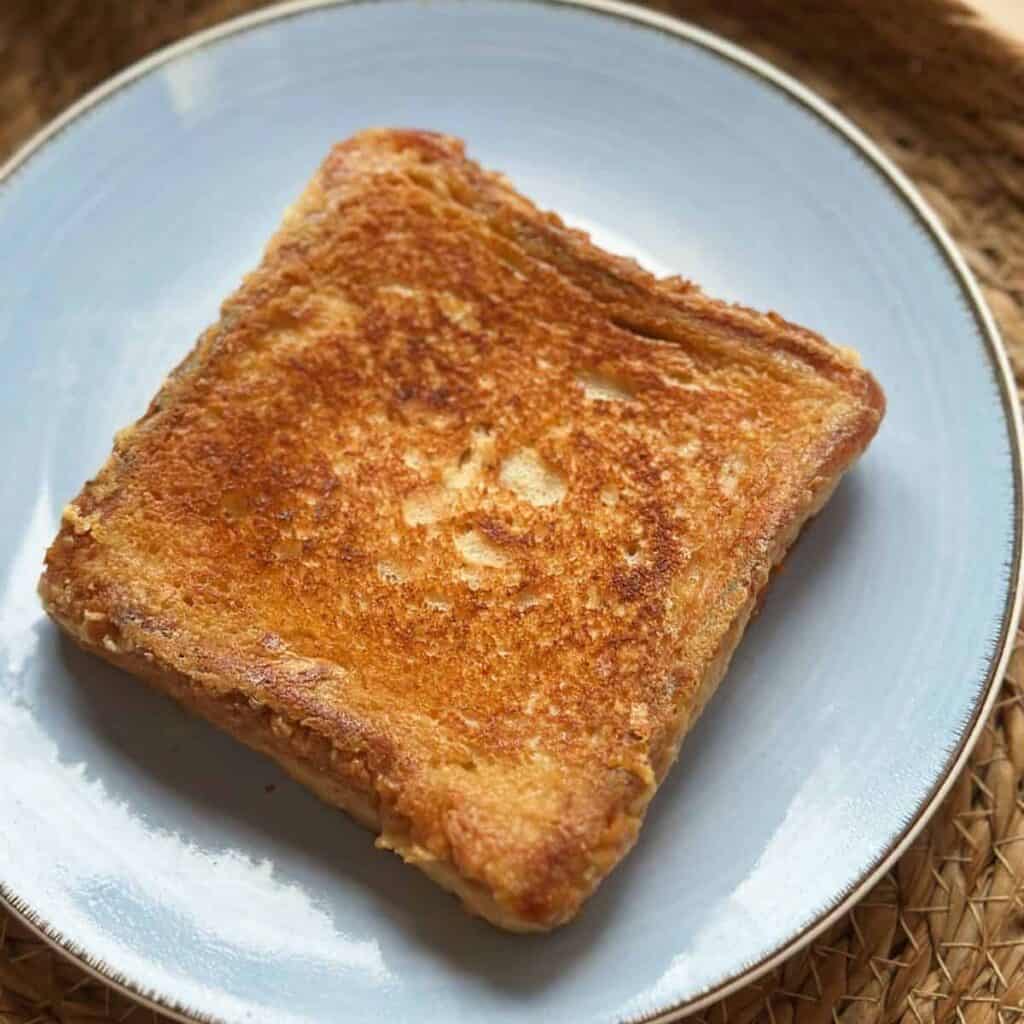Bánh Flan / Kem Flan is how we call Crème Caramel in Vietnam. In its home country, Vietnamese flan is made from eggs, sweetened condensed milk, and served with coffee. It’s a cherished part of my childhood, the one thing I long for the most in Germany.
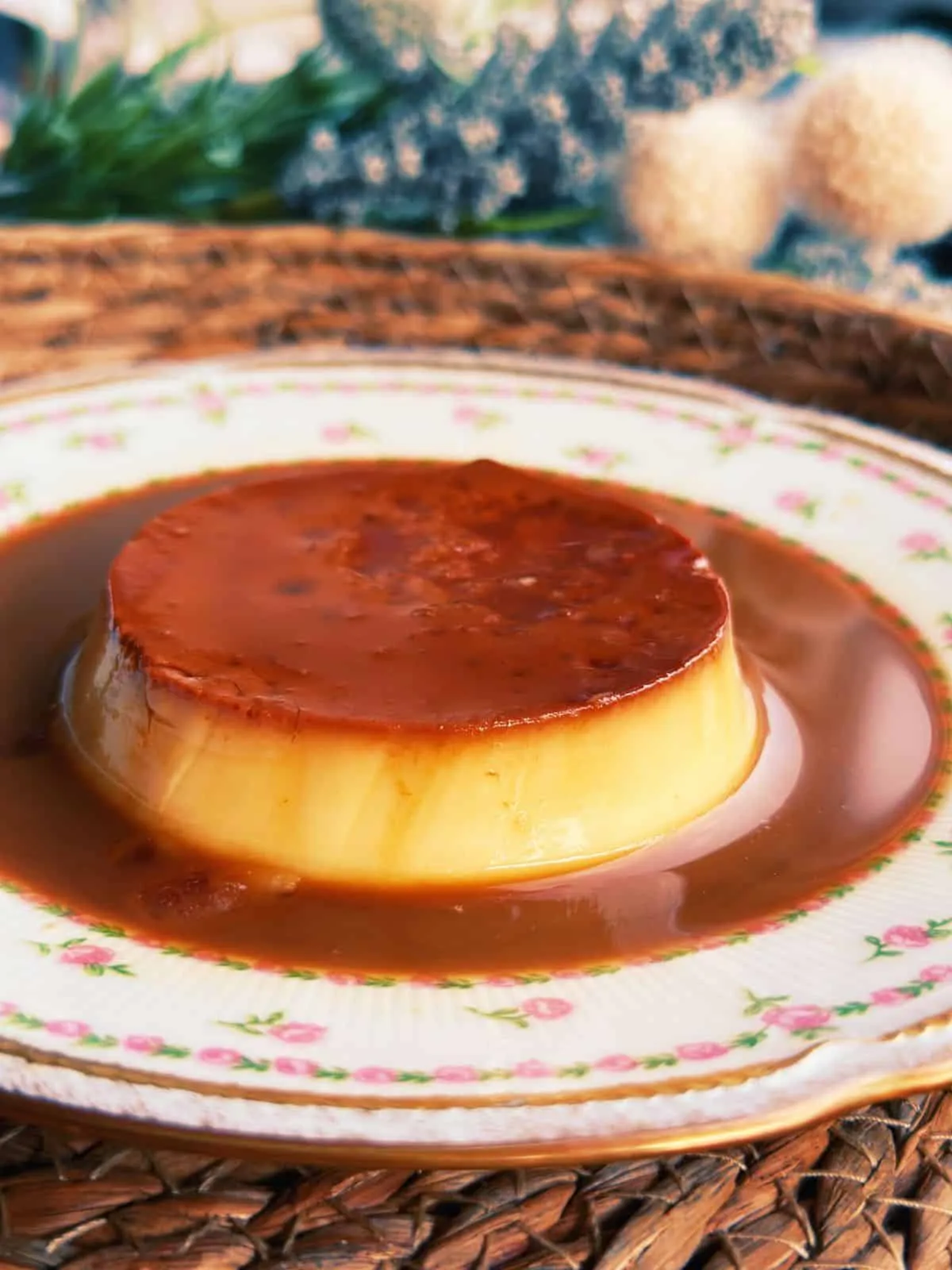
Table of Contents
❤️ Kem Flan – A sweet part of my Childhood
I was born and raised in Nha Trang, where we often call Flan as Kem Flan.
Kids love sweets. Many Vietnamese traditional sweet snacks like Bánh Khoai Mì Nướng (Baked Cassava Cake) or Bánh Kẹp Lá Dứa (Coconut Pandan Waffles) are part of my childhood.
I still remember, after my kindergarten days, my dad often brought me to a local dessert store where I would enjoy my favorite Flan Caramel.
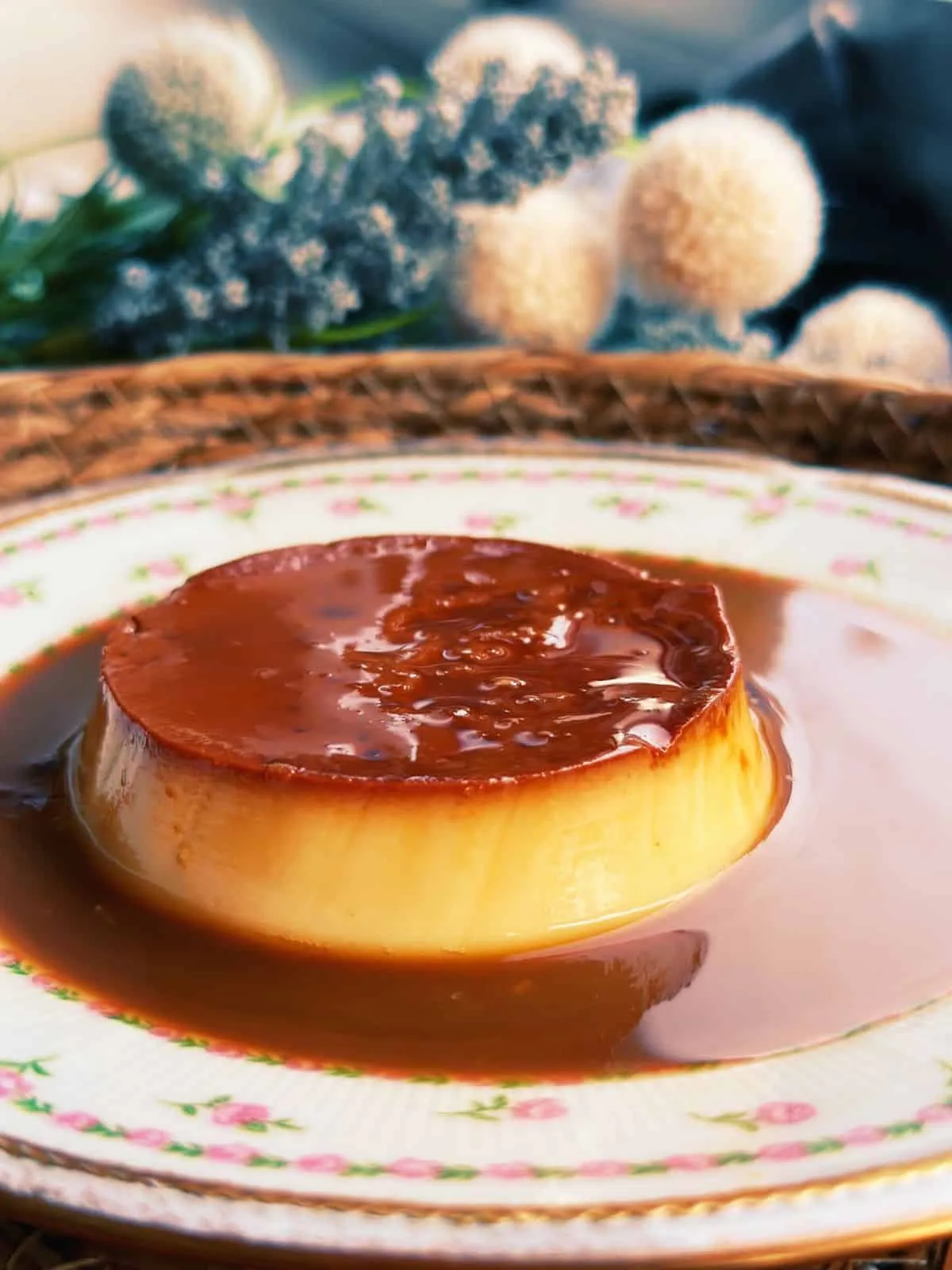
Though small in size, the store sold the best Kem Flan and Da Ua (Vietnamese yogurt) . My mom told me they had been in the city for over thirty years, even before the conclusion of the Vietnam War.
When I grew up, the shop was closed, and people told me the owner had relocated to the U.S. After then, even though I’ve tried these desserts throughout Vietnam, the nostalgic taste of childhood remains the most precious to me.
Flan is the thing that the French people brought to my country during the time of colonization. Just like Bánh Mì sandwich and Pâté Chaud , we adapted this famous French dessert with local ingredients to create our own version of Bánh Flan.
I’ve found many Vietnamese flan recipes on the internet, but to be honest, they are not really the flan we have in Vietnam. Bánh Flan is not just the same as French Crème Caramel, Filipino Leche Flan, or Japanese Purin.
Other Vietnamese dishes with French influence maybe you haven’t known:
🙋♀️ What makes Vietnamese Flan special?
Three notes for authentic Vietnamese Flan:
- In Vietnam, flan is often paired with coffee:
The combination of flan and coffee is simply unbeatable in Vietnam. The bitter and dark flavor of coffee balances out the sweetness of the caramel syrup in the flan. If you’ve never tried pouring coffee over the flan, it’s definitely worth a try!
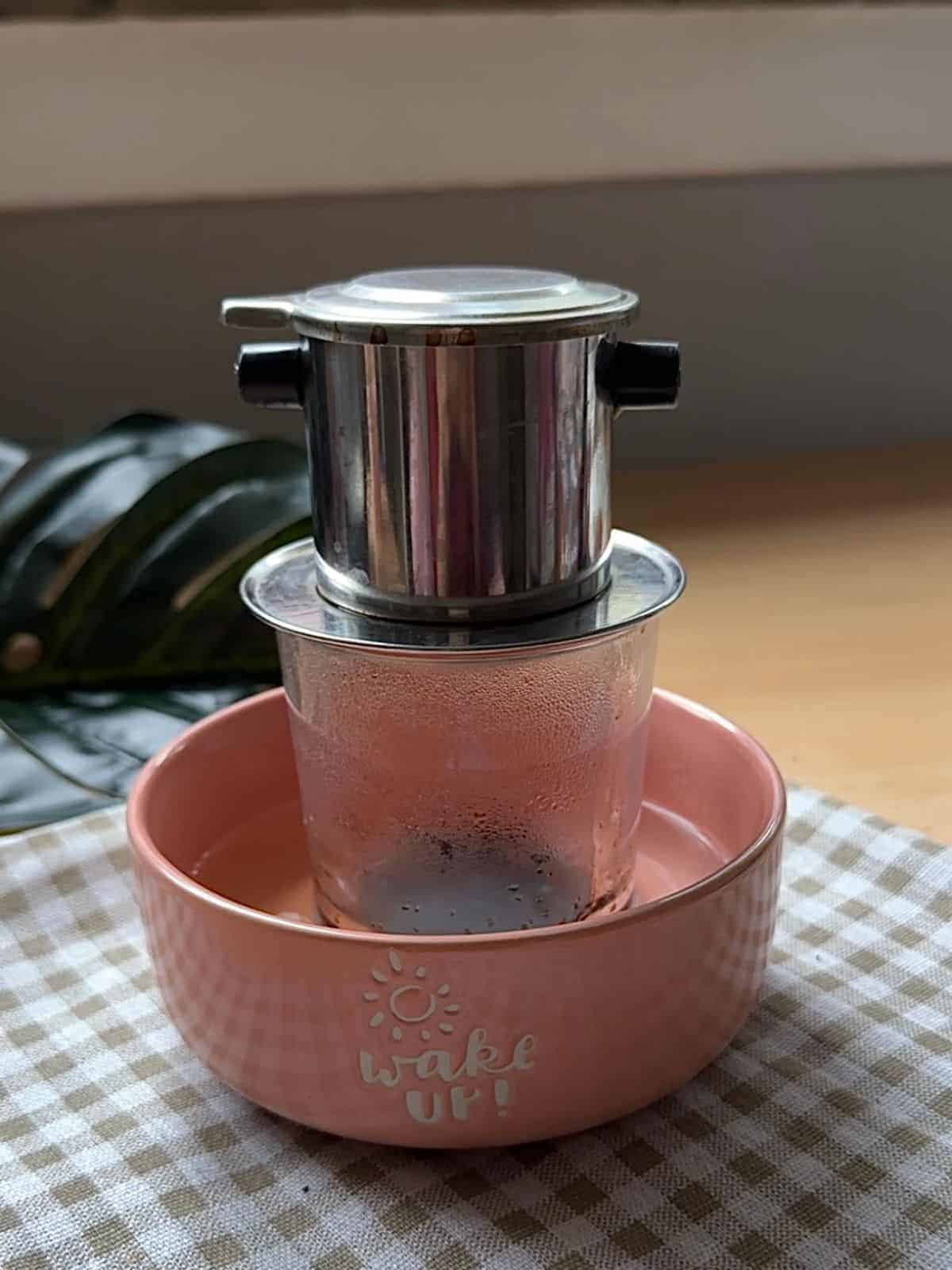
Vietnamese people love to incorporate coffee in many desserts and drinks like:
- Avocado Coffee: we pair sinh tố bơ (Vietnamese avocado smoothie) and coffee to create a new drink.
Until my teenage years, I had always believed that flan should be accompanied by coffee. If you try street food flan in Vietnam, you’ll find that 90% of the time it is served with coffee and crushed ice.
In Nha Trang, my hometown, locals eat Bánh Flan with cà phê sữa (Vietnamese Iced Coffee), while in Saigon (Ho Chi Minh City), flan is enjoyed with cà phê đen (black/pure coffee).
- We use sweetened condensed milk to make flan:
In the past, fresh milk was expensive in Vietnam, which is why we often made flan with condensed milk. Cà Phê Trứng (Vietnamese Egg Coffee) was created for the same reason.
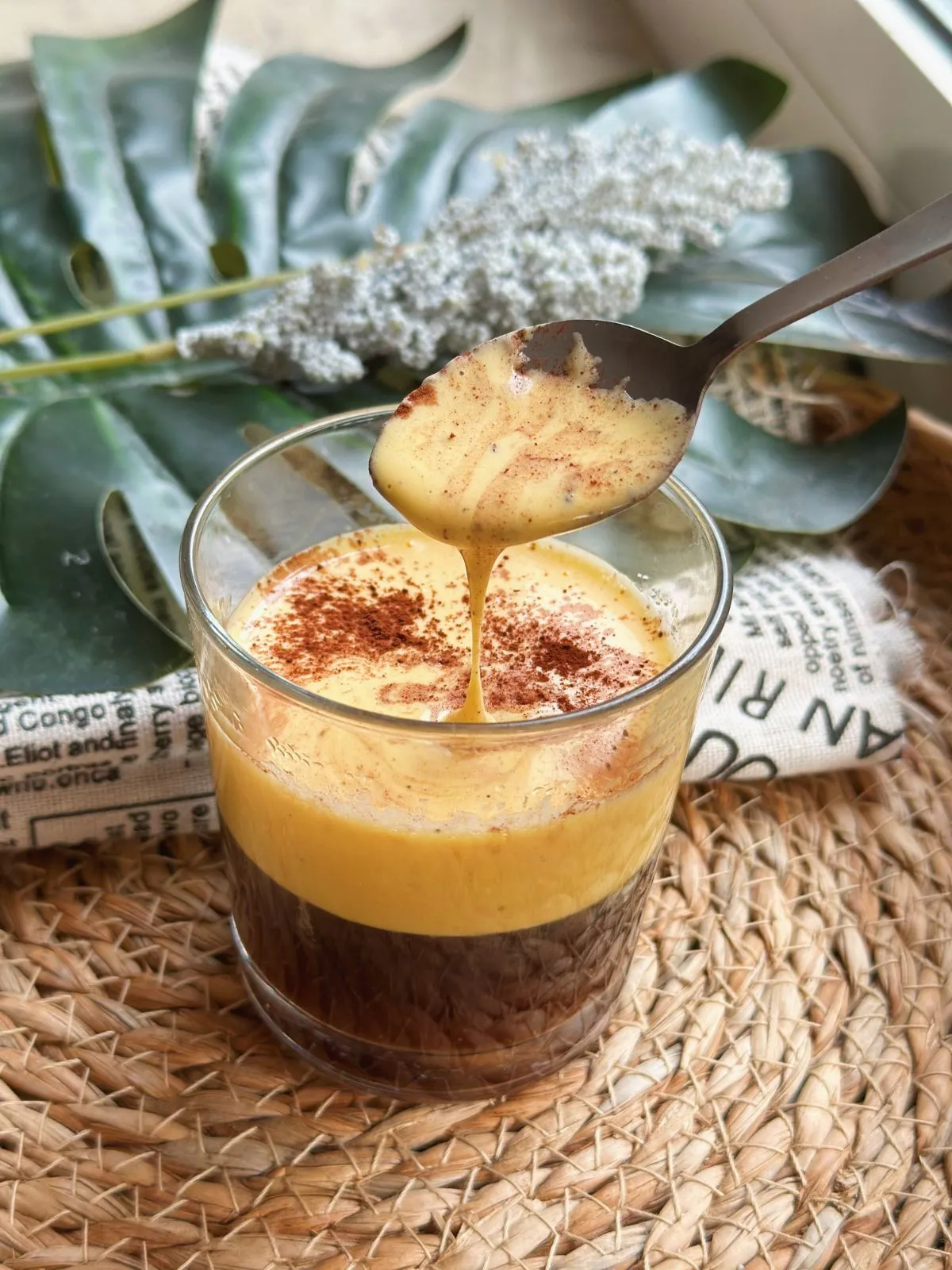
Traditionally, condensed milk was mixed with hot water. However, nowadays, we often use fresh milk instead of hot water to make the flan richer and creamier.
- We use whole eggs to make flan:
Egg yolks make the flan creamier and richer, but Vietnamese moms never want to waste anything while cooking. That’s why we use whole eggs.
I’ve found that the right ratio of whole eggs and milk still creates a delicious creamy and velvety flan pudding without the need for cream or extra egg yolks. This recipe has been tested by me and approved by my German boyfriend.
🍮 Ingredients
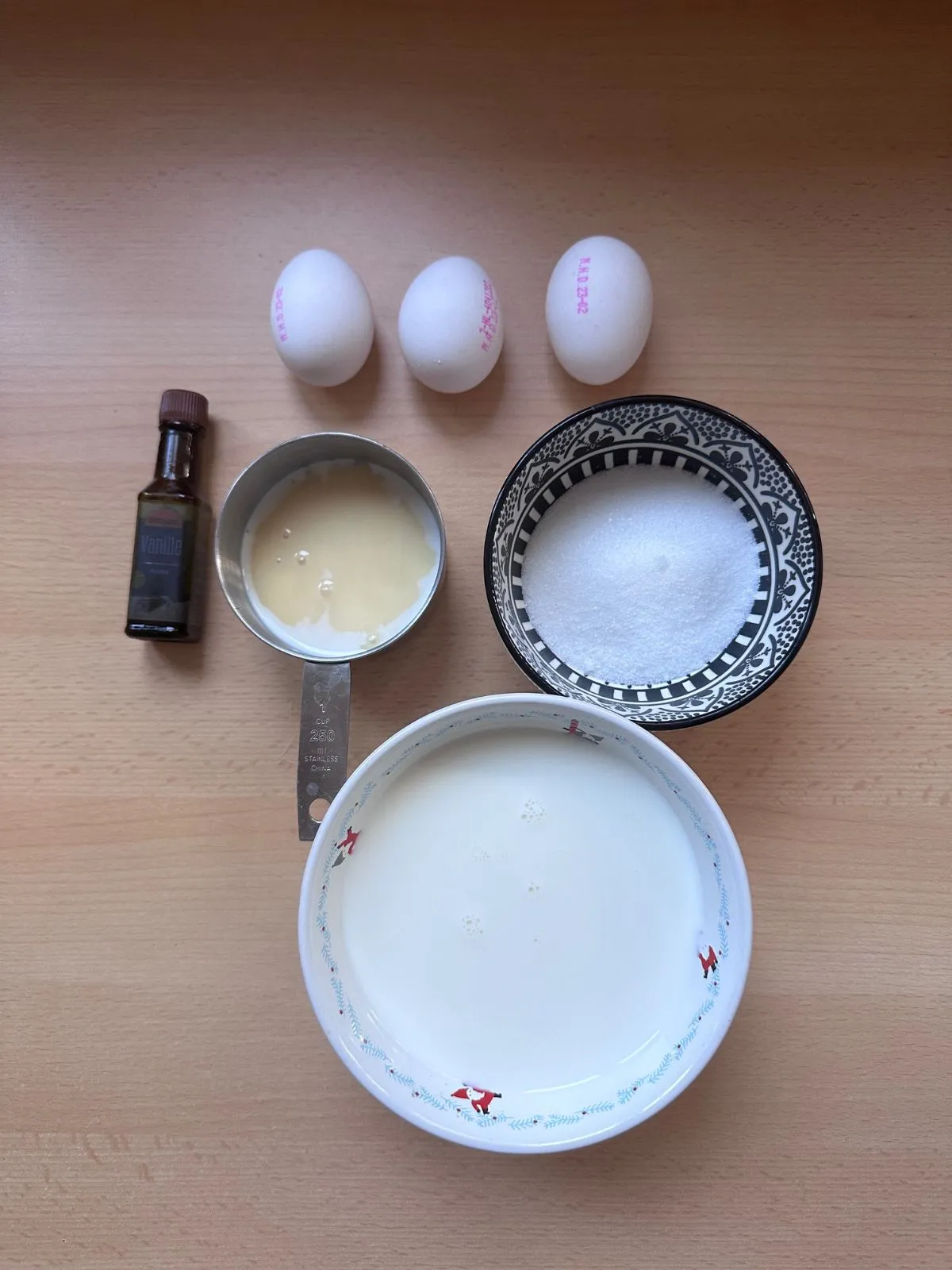
What we need to make Bánh Flan is quite simple:
- Eggs: we will use whole eggs.
- Sweetened condensed milk: a must if you would like to make the authentic Bánh Flan. Or you also could substitute with sugar.
- Full-cream milk
- Vanilla extract
- Caramel Syrup: some sugar and a bit of water to make the caramel syrup.
- Coffee: Vietnamese flan is often served with coffee. I used my Vietnamese Iced Coffee , but you could use instant coffee, Espresso, or any types of coffee you have on hand.
📝 Instructions
Make the Caramel Syrup:
- Combine the sugar and water in a saucepan over medium heat. Be careful not to stir the mixture too much whem cooking; this can cause the sugar to crystallize.
- Increase the heat to medium-high and wait until the mixture begins bubbling. Monitor it closely, as it will take approximately 5-7 minutes to bubble. Once it starts to turn to a golden-orange or amber hue, indicating that the caramelization process has begun, you can swirl the pot to evenly distribute the syrup.

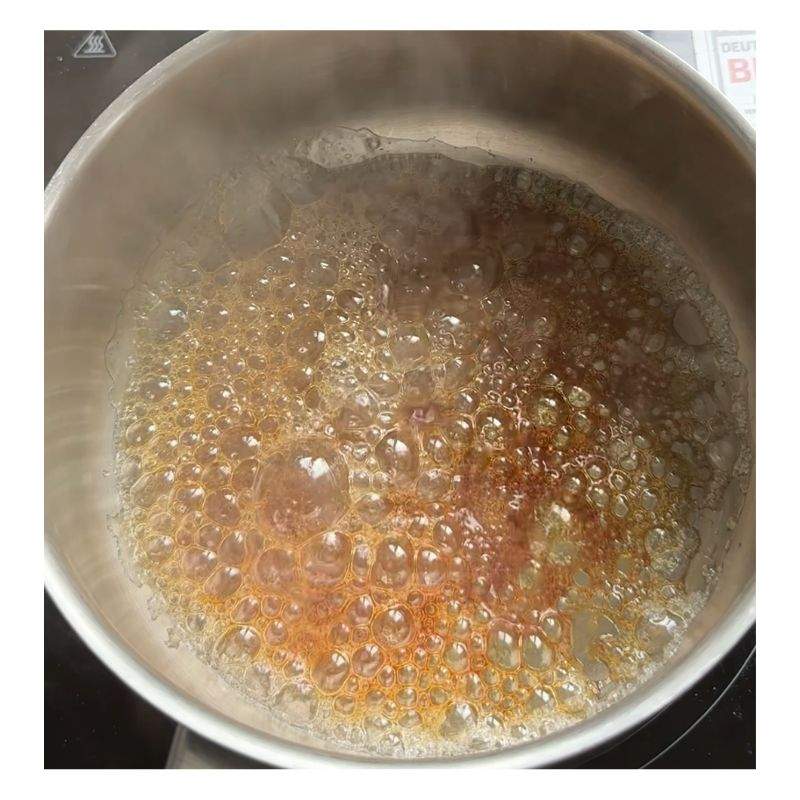
- Once the syrup turns a dark orange color (in just a minute), remove it from the heat and continue swirling until you achieve an even color. Swiftly pour the caramel syrup into the ramekins, tilting them to ensure the bottom is evenly coated. Let the ramekins cool.

Prepare the flan mixture:
- Start by beating the eggs lightly with a fork.
- Heat the milk and sweetened condensed milk in a saucepan over medium-low heat, The milk should just start to a boil (176°F/80°C). Stir occasionally until the condensed milk dissolves completely.


- Gradually pour the milk mixture over the beaten eggs while stirring constantly. Add vanilla extract and mix well.
- To make the flan even smoother, strain the mixture through a fine sieve.


- Pour the flan mixture into the ramekins. Cover the ramekins with aluminum foil.

Steam the flan:
In Vietnam, we often steam bánh flan to cook since ovens are not popular in our kitchens. For the oven-baking and Instant Pot method, check my recipe for single-serve milk carton flan.
- Steam the flan over low heat, ensuring the water is gently bubbling rather than boiling, for about 30-40 minutes.

- To test, insert a toothpick into the flan. If it comes out clean, the flan is ready.
- Remove the flan from the steamer and allow it to cool while covered. Refrigerate the flan overnight to help it set.
Serve Vietnamese flan:
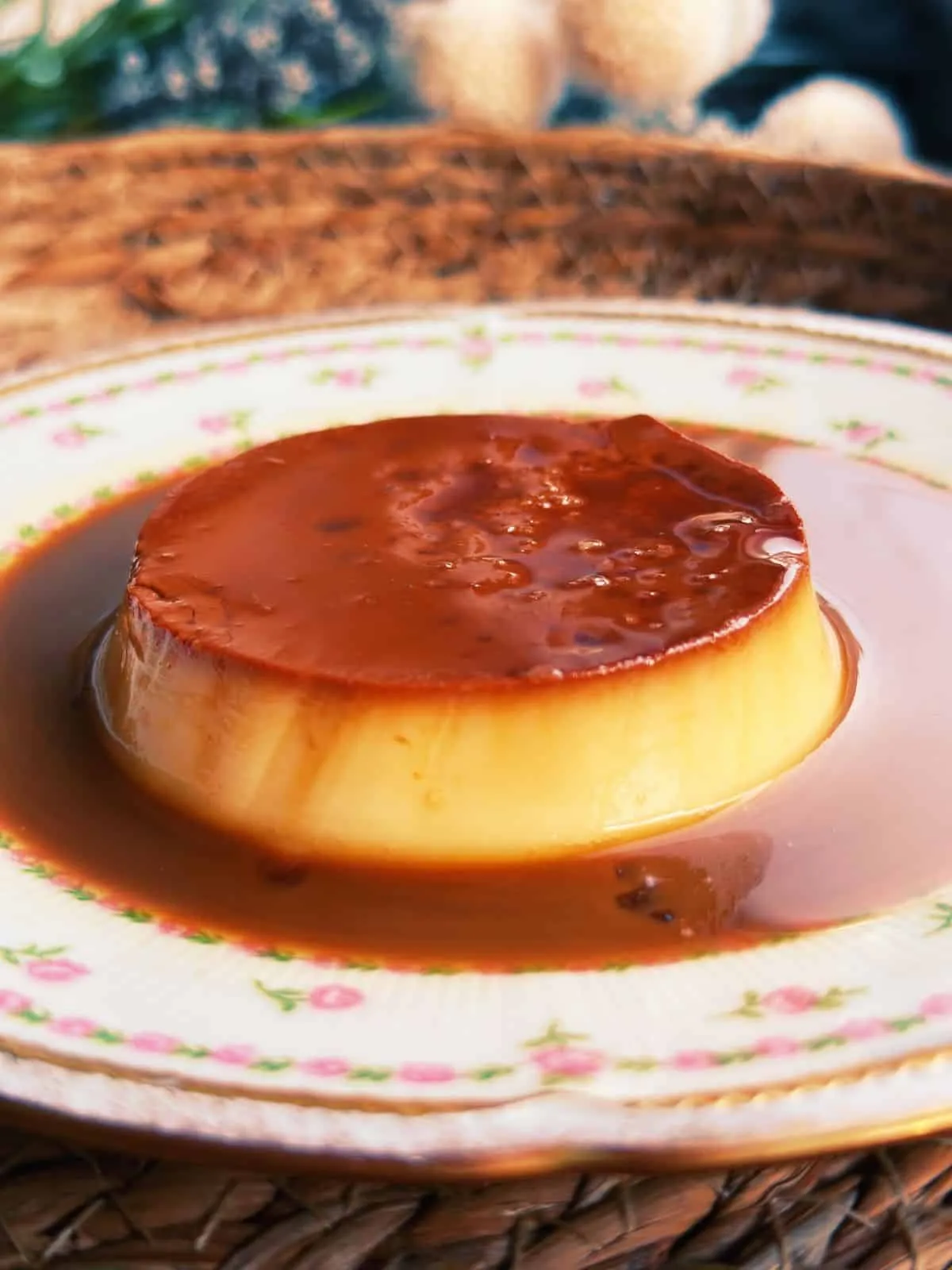
- Run a knife along the edges of the ramekin to loosen the flan, then invert the ramekin onto a plate to release the dessert.
- Serve the flan cold with some coffee, and maybe some crushed ice.
🌟 Helpful Tips
- Monitor the caramel syrup closely: it can burn easily within seconds. One tip to reduce the risk of burning is to add 1 tbsp of water once the caramel reaches the desired color. This can help stop the caramelization process.
- Control the color of the caramel syrup: the lighter the syrup, the sweeter it will be. If you prefer your flan with a sweet and deeply bitter caramel syrup, wait until the syrup turns a dark orange color (being careful not to let it burn).
- Quickly pour the syrup into the molds: The caramel will harden rapidly. Once your syrup is ready, swiftly pour it into your molds and tilt them to distribute the syrup evenly.
- Temper the eggs: your milk mixture should just reach the boiling point (176°F/80°C) otherwise it could cook the eggs upon pouring. Gradually pour the milk into the eggs while continuously and gently whisking.
- Avoid overbeating the eggs: We don’t want bubbles in your flan. I recommend using a fork or chopsticks to beat the eggs.
- If you steam the flan, ensure the water is at a gentle boil. Never allow it to vigorously boil, as this can cause the flan mixture to bubble excessively -> ugly bubbles all around your flan
- Don’t overcook your flan: Overcooking can result in a rubbery texture and an eggy taste. Keep a close eye on your flan and check it regularly.
- Allow the flan to chill before serving: If served while still hot, it may break upon releasing from the mold.
- Adjust the cooking time according to the size of your mold: the larger the mold, the longer it will take to cook.
✔️ How to test if the flan is done
There are several ways to test if your flan is ready:
- Toothpick test: Insert a toothpick into the flan. If it comes out clean, the flan is ready.
- Finger test (I often use this way): Gently touch the center of the flan with your finger. If no mixture sticks to your finger, the flan is done.
- Jiggle test: Gently shake the molds or ramekins containing the flan. The center of the flan should have a gentle jiggle, while the edges should be firm. If the flan moves as one solid piece (instead of rippling like a stone tossed into water), it is ready.
🌟 Variations
- You could substitute the milk with the same amount of coconut milk and water, or serve Vietnamese flan with coconut milk. Coconut flan (Flan dừa) is also popular in Vietnam.
- The salted cream for Cà Phê Muối (Vietnamese Salt Coffee) also pairs well with this flan.
- In Vietnam, we also love to top our milk tea with flan. It adds a fun texture to the drink. You could try my quick & easy caramel milk tea recipe.
🥛 What to do with leftover condensed milk
In Vietnam, sweetened condensed milk is widely used in making desserts and marinating meat. If you have leftover condensed milk, you can experiment with these recipes:
🍜 Authentic Vietnamese recipes to make at home
- Some Vietnamese appetizer ideas for you parties

- Hanoi Fried Spring Rolls (Nem Rán): These crispy and gluten-free fried spring rolls from Northern Vietnam will give you a different experience from the popular Chả Giò (Vietnamese Egg Rolls).
- Vietnamese Spring Rolls (Gỏi Cuốn): light, refreshing and perfect as a party appetizer. The accompany peanut dipping sauce is truly a hit.
- Bún Bò Xào (Vietnamese Beef Rice Noodle Bowl): For any huge fans of Vietnamese rice noodle salads.
- Special Vietnamese treats for your weekends
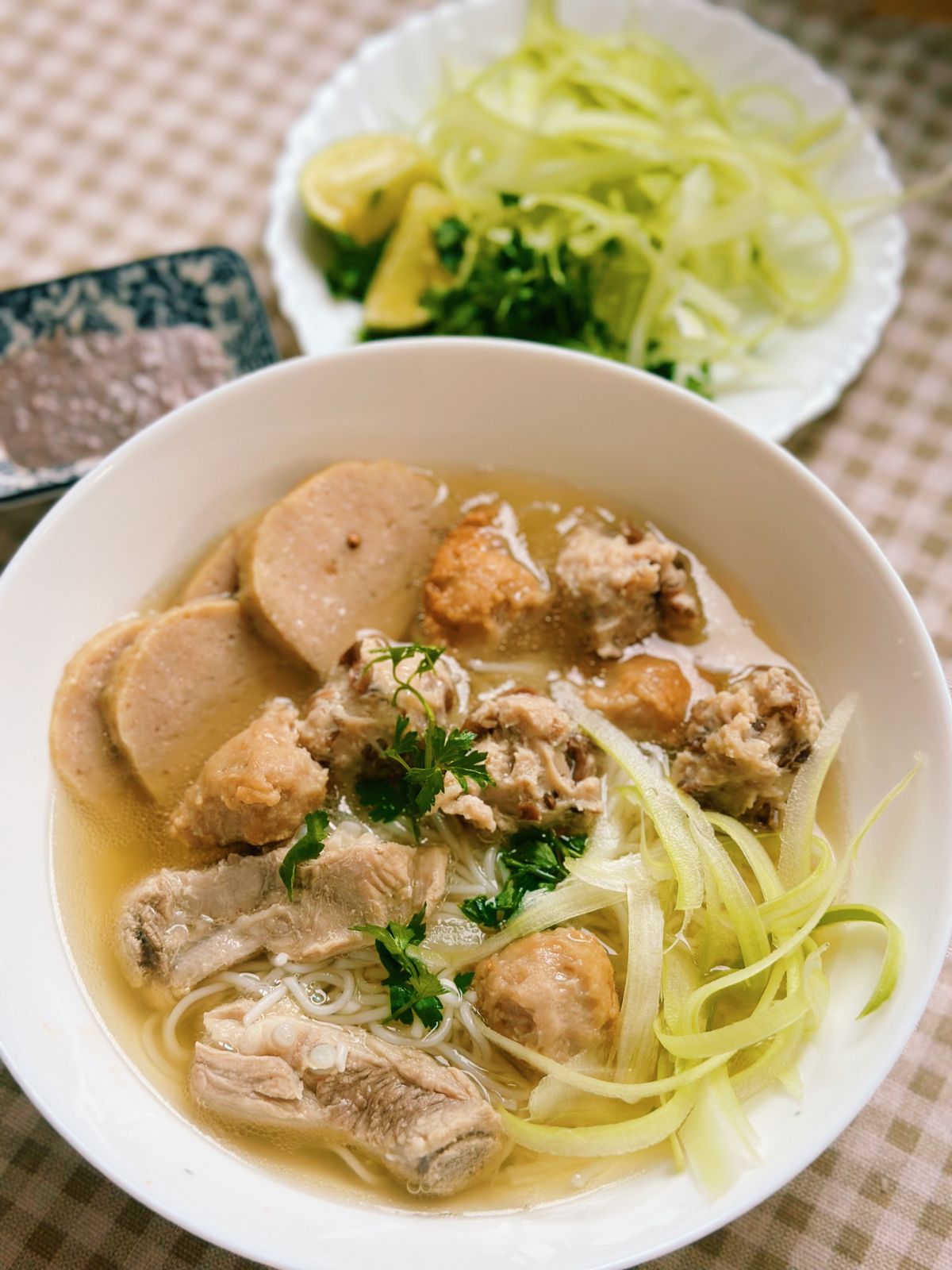
- Bánh Xèo (Vietnamese Sizzling Pancakes): This Southern-style Bánh Xèo has won over all my friends’ heart. Don’t forget Nước Chấm and Đồ Chua, those much-have accompanients.
- Bánh Xèo Waffle: an option for those who are lazy to clean up.
- Bún Mọc (Vietnamese rice noodle soup with pork balls): Less well-known than Phở or Bún Bò Huế, but no less delicious, it’s even easier to prepare compared to other Vietnamese noodle soups.
- Bring Vietnamese street food to your home

- Bánh Tráng Nướng (Vietnamese Pizza): A famous street food from the charming city of Đà Lạt. It’s absolutely easy and can be made in less than 15 minutes.
- Bò Bía (Spring Rolls with Chinese Sausages): small salad rolls but they’re packed with flavors. They’re a nostalgic part of my childhood in Vietnam.
- Bánh Bột Chiên (Fried Rice Cakes with Eggs): a popular street food in Saigon’s Chinatown. The melting point of Vietnamese & Cantonese cuisines.
Thank you for trying my recipe!! Don’t forget to stay in touch with me on Instagram, Facebook, Pinterest, and YouTube 🥰.

Authentic Bánh Flan – Vietnamese Flan with Condensed Milk
Ingredients
For the flan:
- 3 eggs (large-sized eggs)
- 1½ cup full-cream milk (375ml)
- ½ cup sweetened condensed milk (125ml/120g)
- ½ tsp vanilla extract
For the caramel syrup:
- 5 tbsp granulate sugar (80g)
- 1 tbsp water
Serve:
- Vietnamese Iced Coffee (Cà Phê Sữa Đá)
- Crushed ice (optional)
Instructions
The caramel syrup:
- In a saucepan over medium heat, combine the sugar and water. Be cautious not to stir the mixture too much while cooking, as this may cause the sugar to crystallize.
- Increase the heat to medium-high and let the mixture melt and start bubbling. Keep a close eye on it, as it will take about 5-7 minutes to bubble. Once it begins to turn a golden-orange or amber hue, signaling the start of the caramelization process, you can swirl the pot to evenly distribute the syrup.
- Once the syrup achieves a dark orange color (usually within a minute), remove it from the heat and continue swirling until you achieve an even color. Quickly pour the caramel syrup into the ramekins, tilting them to ensure even coating at the bottom. Set the ramekins aside to cool.
The flan:
- Beat the eggs lightly with a fork or chopsticks.
- Heat the combination of milk and sweetened condensed milk over medium-low heat, making sure it doesn’t come to a boil. Stir occasionally until the condensed milk dissolves completely.
- Slowly pour the WARM milk mixture over the beaten eggs while stirring constantly. Add vanilla extract.
- Pass the mixture through a fine sieve to remove egg chalazae.
- Steam the flan over low heat, ensuring the water is just gently bubbling. It will take about 30-40 minutes. For oven-baking and Instant Pot method, check my recipe for milk carton flan.
- To check, insert a toothpick into the flan. If it comes out clean, the flan is done.
- Take the flan out of the steamer and let it cool while still covered. Refrigerate the flan overnight to help it set.
Serve the flan:
- Gently run a knife along the edges of the ramekin to loosen the flan, then invert the ramekin onto a plate to release the dessert.
- Enjoy the flan with some coffee, and some crushed ice.



